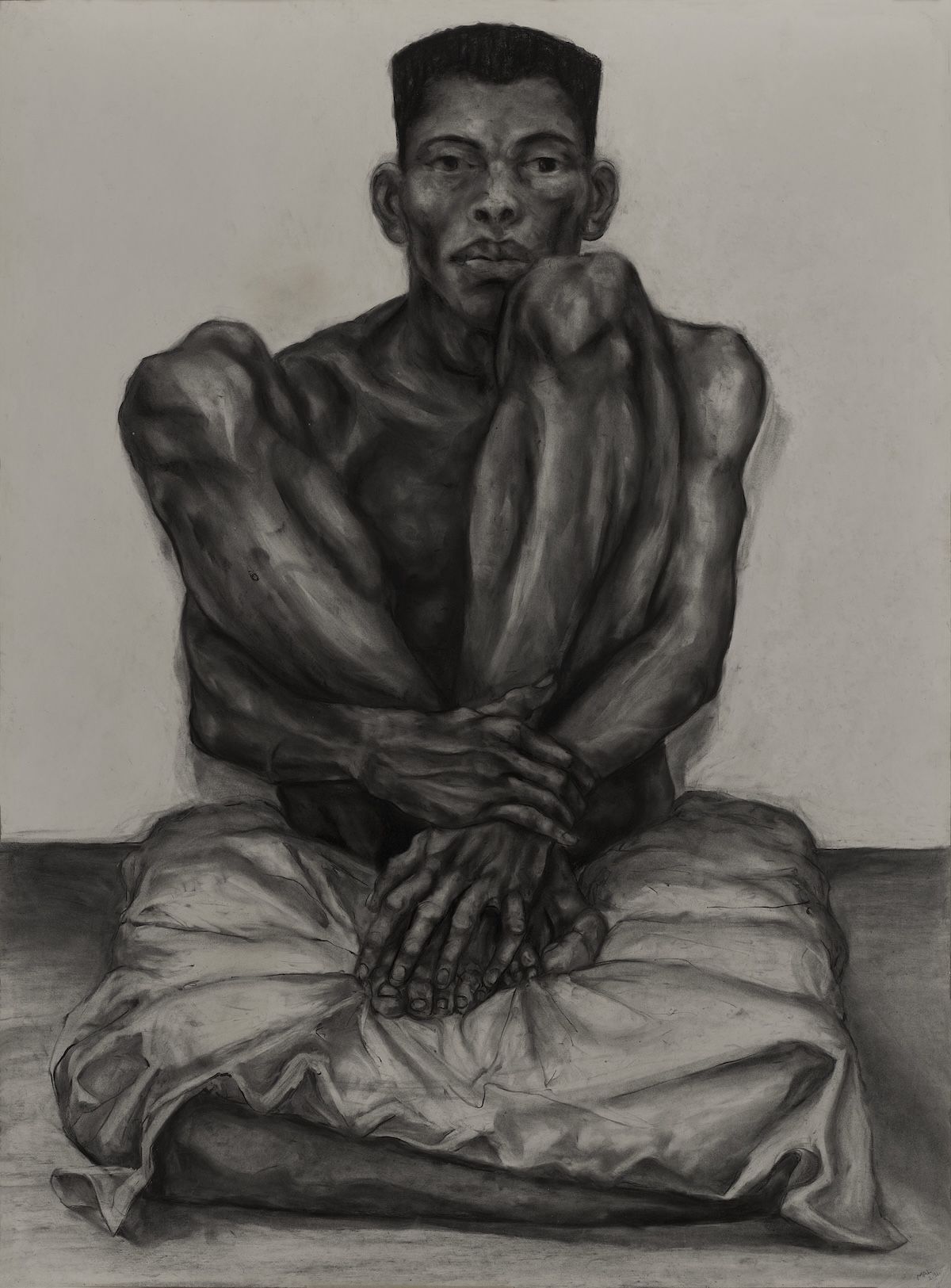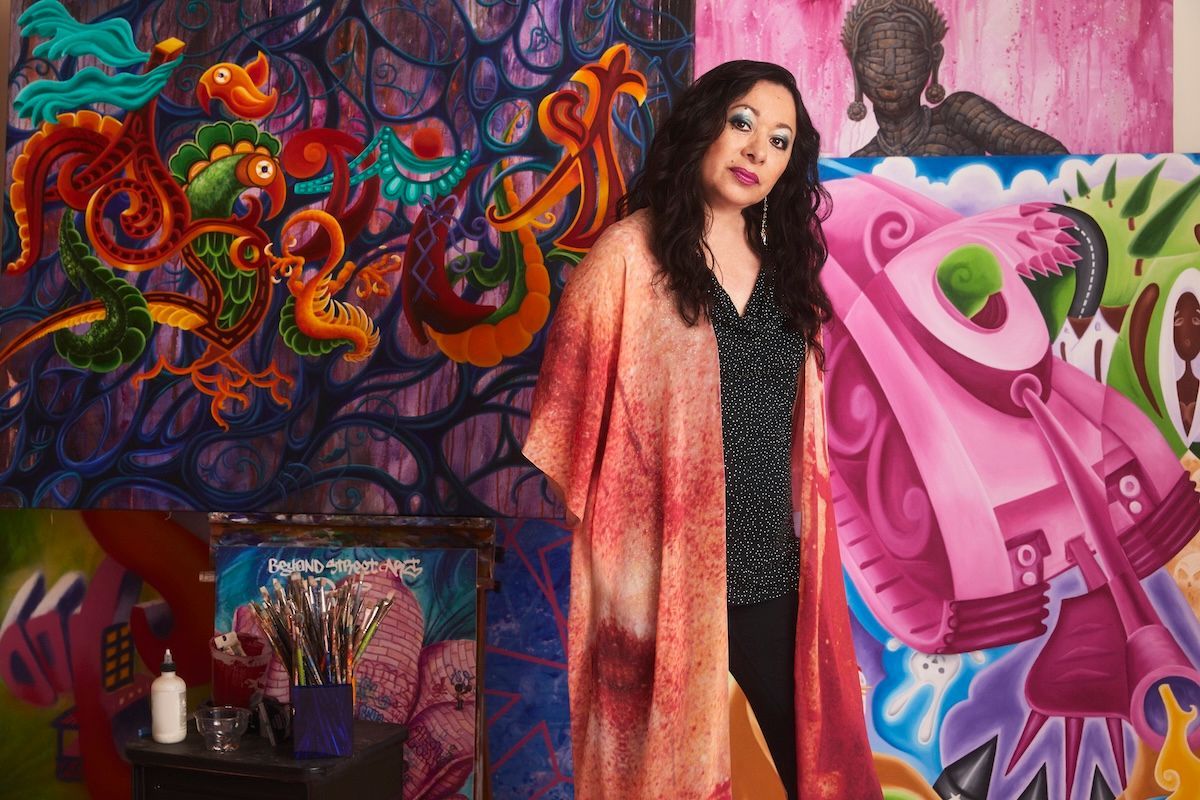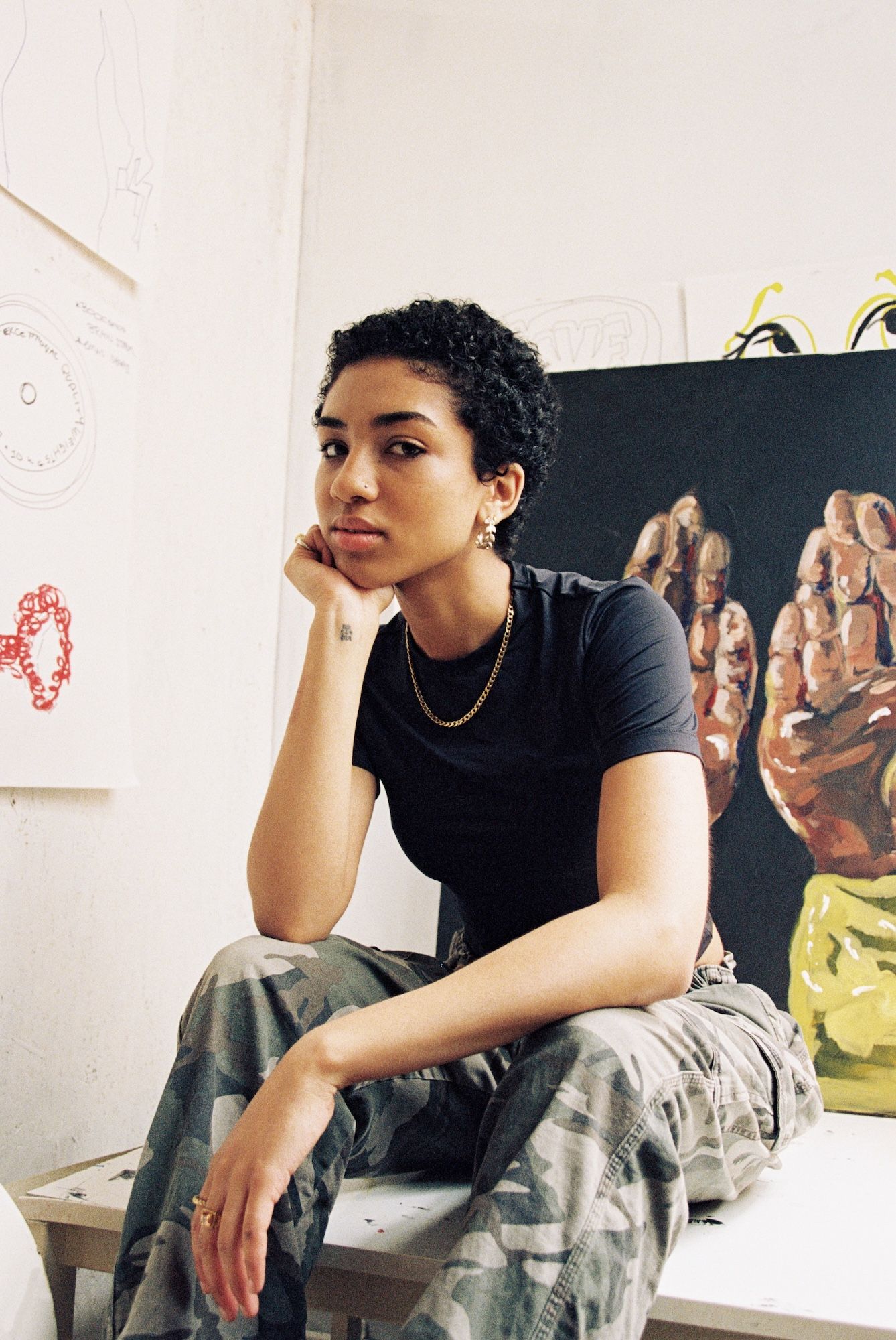Miwa Komatsu is a multidisciplinary artist from Japan with a knack for translating the depths of spiritual insight into magical and entrancing works of art.
Born and raised in the mountainous prefecture of Nagano, Komatsu has had a deep and profound connection to nature since an early age, a unique and abiding kinship that prompted her interest in the invisible world of Japanese folklore and mythology.
A zealous upholder of the sacredness of art, Miwa Komatsu has made her creations the outlet for a syncretic philosophy of her own that she calls the Great Harmonisation.
Conceived in opposition to the notion of Great Acceleration, which describes the dramatic increase in human activity and its impact on the Earth’s ecosystem since the mid-20th century, the Great Harmonisation maintains the equality of all living beings, and the necessity of their amicable coexistence.
Consistent with her harmonising ethos and spiritual approach to art making, Komatsu draws on different cultures that include traditional lore, Buddhism and Shinto imagery to conjure mystical, otherworldly visions. Imbued with a sense of raw spontaneity and rendered in a style that bridges abstraction with figuration, her paintings are populated with creatures straddling the line between the supernatural and the religious.
Best known to the general public for her canvases and ceramic sculptures, Miwa Komatsu has engaged in recent years in a number of live painting performances across Asia and Europe. Held in locations of spiritual significance, the performances are regarded by the artist as sacred communal rituals, aiming at establishing a connection with the divine.
On 11th June, Komatsu will perform her first live painting in London, at Fitzrovia Chapel. The performance is organised by Avant Arte, a curated marketplace with a mission to make discovering and collecting art more accessible.
The session will be live streamed at avantarte.com. Collectors will have the opportunity to purchase a print edition of Komatsu’s new work from Avant Arte website for 48 hours from when the session begins.
1883 Arts Editor met Miwa Komatsu to discuss her art and influences, and find out more about her live painting rituals.

Hello Miwa, thank you for taking the time for today’s interview. Can you tell us about your artistic background and what inspired you to pursue art as a career?
From my childhood to the present, I’ve always felt a great deal of energy from nature. By interacting with the many elements and beings that exist in nature, I gain the sources of my creativity. The encounters with divine beings through my connection with nature, the universe, and pure energy have also taught me the importance of the soul. They have encouraged its growth, further inspiring my creativity.
My encounters with these spirits, as well as the encounter with guardian lion-dogs (Komainu) and the spirit of the extinct Japanese wolf (Yamainu), have played a significant role in making art my career. Although the Komainu I met were spirits, there’s a theory that Komainu statues, often seen in shrines and at the gates of houses, originated from the cherubim mentioned in the Bible. The lion statues (Shishi) have spread widely across the world in various forms.
Legend has it that the cherubim statues changed form as they crossed continents to Japan via the Stone Road. Blending with many cultures and religious views, they became what we see today. The current form of the Komainu, which emerged from the fusion of many elements, embodies the power of great harmony that I hold as my philosophy. Today, I express this philosophy in the context of art history as the Great Harmonisation. And I believe, it is thanks to this learning that I am where I am now.
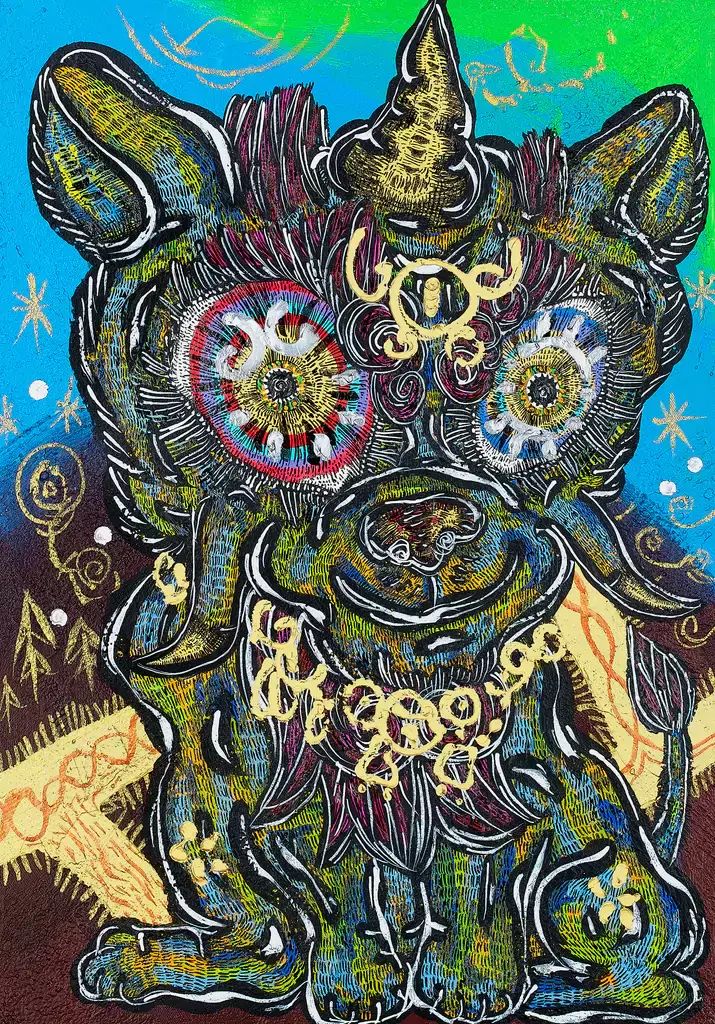
Your practice ranges across multiple media, from painting to sculpture, from etching to virtual reality experiences. Which medium, aside from painting, do you find you are most drawn to at the moment?
I have begun activities that connect places with three-dimensional art, such as the public art sculpture Konohana Water Dragon placed in Shorenji River Park in Konohana Ward, Osaka, and the display of a giant lantern at the Taipei Lantern Festival. By placing my works in public spaces, I connect with the elements of the land and integrate with the lives of the beings that gather there. With the hope that art becomes a remedy for people’s hearts, I create my works with a prayerful intent. Moving forward, I plan to continue working on public art, while exploring new mediums and materials in my creations.
Tell us about your live painting. What is it about live painting in public spaces that appeals to you?
Creating art in public spaces provides an opportunity to connect more deeply with sacred beings and invisible energies. By sensing and incorporating the audience’s energy into the work, the fragments of multiple hearts become one, thus manifesting as a large form of prayer.
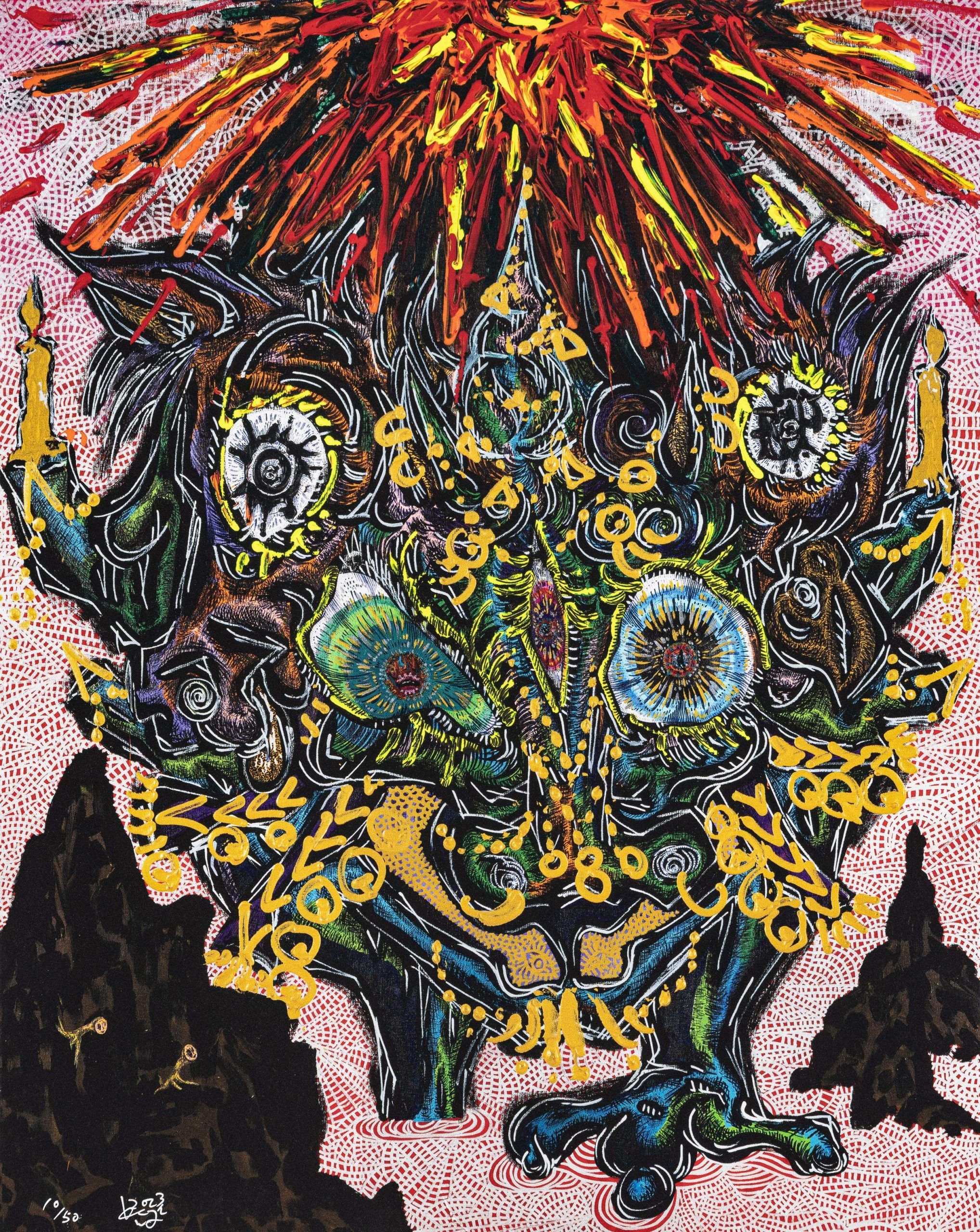
How do you go about choosing the right location for live painting rituals?
Live painting and public creation are not events or performances, but forms of prayer, conducted as sacred rituals. I prioritise elevating the level of prayer rather than focusing on the level of the artwork itself. Therefore I choose places that resonate with this sentiment to create my works. I believe the history and accumulated energy of each location guide me to a single answer – that is, the artwork. And I dedicate myself wholeheartedly to my creative activities.
And how do you describe your creative process?
Above all, it is meditation. By meditating, I align my mind and open the visions seen through the third eye, known as the Nimitta. It is important to draw the shapes that come into view while minimising the influence of the ego. Meditation allows one to see many things by focusing on a single point. Therefore, it is crucial in the process to concentrate with a clear and orderly mind. Free from distractions, negative emotions, and desires.
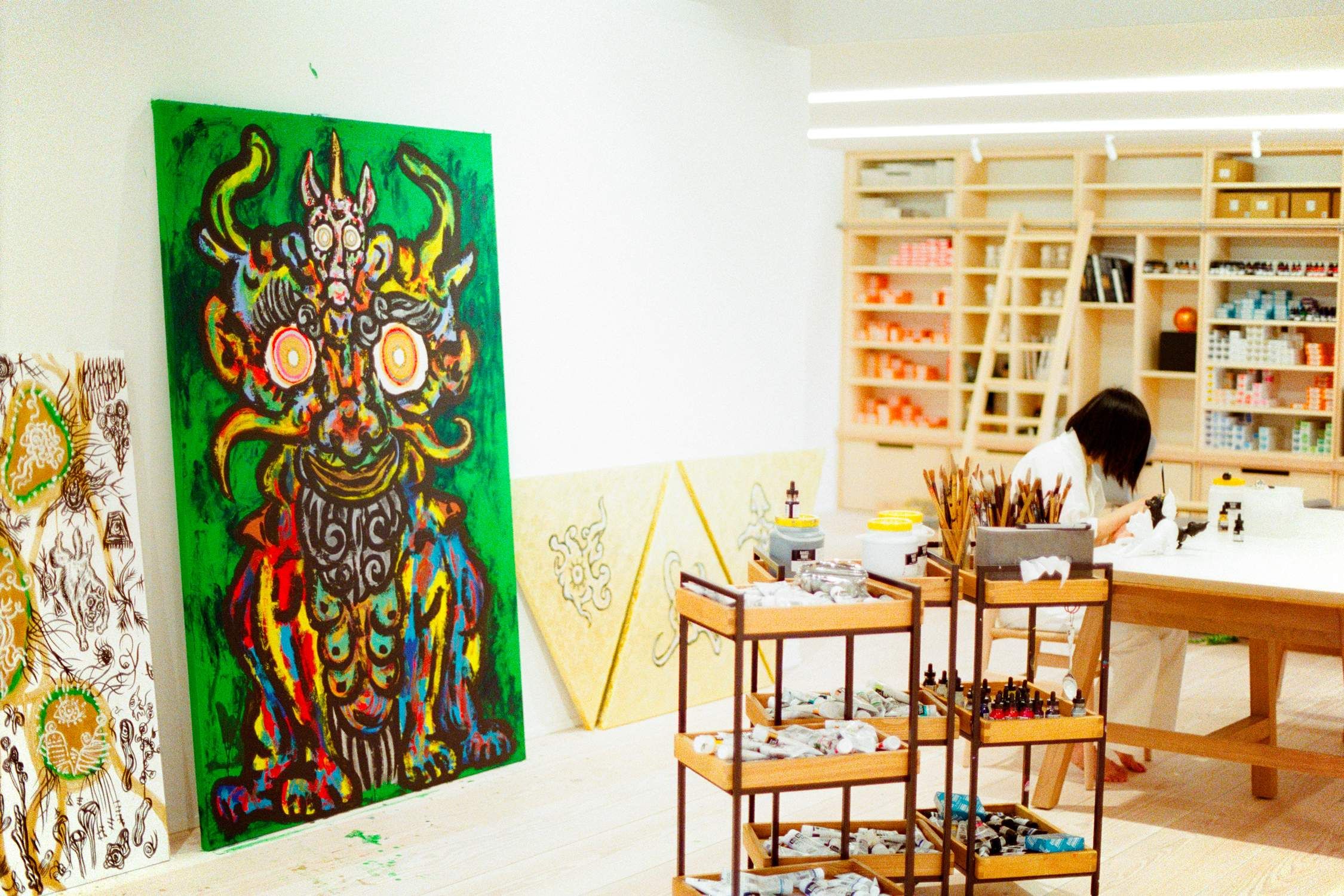
Much of your work is imbued with a profound spirituality. How do Japanese folklore and mythology inform your practice?
I was born and raised in a land surrounded by mountains. When it came to places to play, it was either the river or the nearby hills that even children could climb. In my interactions with nature, I certainly felt and encountered spirits and divine beings. One of these significant beings was the Yamainu. I believed in the mysterious but clearly visible world from the folktales and traditions told by the adults. From these experiences, I began to wonder what exactly divine beings were.
As an adult, I started visiting places mentioned in Japan’s myths, such as the Kojiki and Fudoki, to learn firsthand. I learned about the legends of the Yamainu through the nature of Chichibu, Koyasan, and Nagano Prefecture.
Around the age of 30, I went to southern Thailand. There, I embarked upon my meditation training, and the fusion of meditation and creation began. I learned that spirits and divine beings appear in myths and traditions worldwide. I also began to feel their presence through the ruins, nature, and culture of the countries I travelled to. From these experiences, I became able to interact with and depict these non-material beings, free from the boundaries of nationality or discrimination, through my brush.
The megaliths and myths of Britain also interest me greatly. I have visited several ruins. By feeling their presence, I sometimes record a fragment of time that has been woven from the past into the future. When I visit the British Museum, it often feels as if what appears to be mere statues speak to me. The museum is lively with not just human voices but also many thoughts flying around.
Through these experiences, I have become increasingly interested in myths from around the world. I have visited many countries to experience them firsthand. This has greatly enhanced my spirituality. Divine spirits do not meet your eyes in a physical sense, as they look into our souls. I wondered if, when I became a being of pure spirit, I could shine brightly. Knowing that my way of living is always being observed by the non-material world, I gained certainty in this belief. This realisation led to the development of my current style, including drawing large eyes.
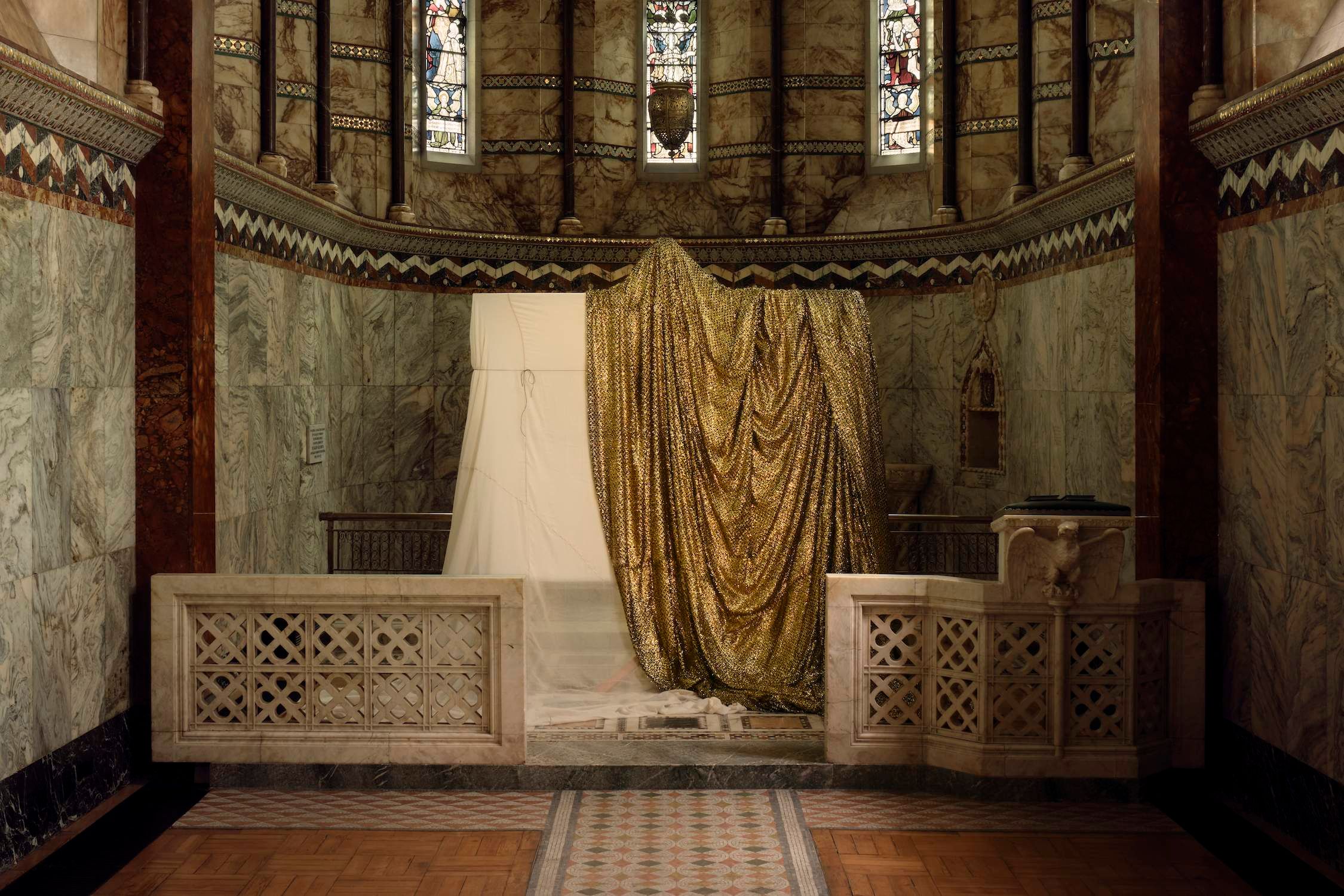
Do you think of yourself as a spiritual person?
I think I’m just a human being. I believe by choosing and practising a life that allows me to feel deeply, I’ve been given the role I have in this lifetime. And I think my current efforts will determine my next life.
What does the future hold for you?
I believe that growing my soul and elevating the level of my prayers all connect to my creative work. I also believe that art is a remedy that heals people’s hearts, so I am committed to upholding that belief.
Miwa Komatsu’s live painting ritual will be held at Fitzrovia Chapel, London, on 11th June.
Further information about the performance at avantarte.com
Further information about the artist at miwa-komatsu.jp
Interview Jacopo Nuvolari
Featured image: Miwa Komatsu, 2023 © Niko Wu


